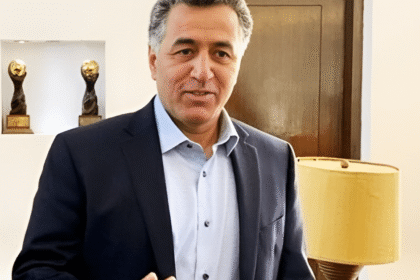Poliomyelitis, commonly known as polio, is a highly contagious viral infection that primarily affects children under five. While many countries have eradicated polio, Pakistan remains one of the last countries where the virus still poses a threat. The government of Punjab, one of Pakistan’s most populous provinces, is making renewed efforts to combat the disease by targeting environmental factors that contribute to its spread. Punjab Chief Minister’s recent call for a comprehensive plan to address these environmental factors marks a significant step in the country’s efforts to become polio-free.
This article delves into the importance of tackling environmental conditions contributing to the persistence of the virus, as well as the government’s renewed focus on vaccinations, public awareness, and the role of international cooperation.
The Persistence of Polio in Pakistan: A Historical Overview
Pakistan has been battling polio for decades, with numerous campaigns to eradicate the virus. While the country has made significant progress in reducing polio cases, environmental conditions in certain regions have allowed the virus to persist. Factors such as poor sanitation, inadequate water supplies, and low vaccination rates in remote areas create fertile ground for the virus to thrive. Despite intensive immunization drives, polio continues to resurface, with many cases linked to these unsanitary environmental conditions.
Polio is transmitted primarily through contaminated water and food. Given this, the need to address environmental factors like water contamination and waste management is critical in the fight against the disease. The government’s new plan focuses on eliminating these root causes.
Government Response: An Emphasis on Environmental Factors
The Punjab Chief Minister’s recent directive to eliminate environmental patterns of the poliovirus highlights the importance of a multi-faceted approach to eradicating the virus. This includes not only continuing vaccination efforts but also addressing the environmental conditions that allow the virus to linger in certain communities.
The new strategy aims to improve sanitation and waste management systems, particularly in urban slums and rural areas where infrastructure is lacking. Contaminated sewage, stagnant water, and uncollected waste are all factors that contribute to the spread of the virus, and the government is focusing its efforts on improving these conditions.
In collaboration with local governments and health organizations, Punjab’s administration aims to identify and address contamination hotspots where the virus is most likely to spread. This targeted approach allows for a more efficient use of resources, ensuring that efforts are concentrated in the areas that need them most.
Vaccination Efforts: Strengthening Immunization Campaigns
While improving sanitation is crucial, vaccination remains the most effective tool in the fight against polio. The Punjab government is working to strengthen its immunization campaigns, with a focus on reaching children in high-risk areas. These areas often include populations that are either underserved by healthcare services or are resistant to vaccination due to misinformation and mistrust.
The government has launched several initiatives to improve vaccination rates, including door-to-door vaccination campaigns, mobile health units, and collaborations with international organizations like the World Health Organization (WHO) and UNICEF. The goal is to ensure that every child under the age of five receives the necessary vaccinations, especially in areas where the virus has been detected in environmental samples.
Despite challenges, these efforts have been largely successful, and the government is determined to continue its fight until Pakistan is declared polio-free.
Public Health Awareness Campaigns: Engaging the Community
Public awareness and education are critical components of the government’s polio eradication strategy. One of the major obstacles to eliminating polio in Pakistan has been the persistence of myths and misconceptions about the vaccine. In certain communities, rumors that the polio vaccine causes infertility or other health issues have led to widespread resistance to vaccination campaigns.
To combat this, the Punjab government has ramped up its public awareness campaigns, utilizing both traditional and digital media to educate the public about the importance of vaccination and proper hygiene practices. These campaigns aim to dispel the myths surrounding the polio vaccine and encourage parents to have their children vaccinated.
In addition to mass media campaigns, the government is working with community leaders and religious figures to help spread accurate information and encourage vaccination. This grassroots approach has been particularly effective in reaching communities that have historically been resistant to government interventions.
Improving Sanitation: Addressing the Root Causes
Poor sanitation is one of the primary factors contributing to the persistence of the poliovirus in certain areas. In many parts of Punjab, particularly in low-income and rural communities, access to clean water and proper waste management is limited. This creates an environment in which the virus can easily spread through contaminated water and food sources.
The government’s new plan focuses heavily on improving sanitation infrastructure, including the construction of new water treatment plants, the repair of sewage systems, and the provision of clean drinking water to underserved communities. These efforts aim to reduce the environmental reservoirs of the virus, preventing new outbreaks from occurring.
By addressing the root causes of the virus’s spread, the government hopes to make lasting improvements in public health, not just in relation to polio, but also for other waterborne diseases that disproportionately affect poor communities.
Environmental Surveillance: Detecting and Responding to Outbreaks
A key component of Punjab’s polio eradication strategy is the enhancement of environmental surveillance systems. These systems involve regularly testing sewage and water sources for the presence of the poliovirus. By detecting the virus in the environment, health officials can identify areas where the virus is circulating and respond with targeted vaccination campaigns and public health interventions.
This surveillance allows the government to stay ahead of potential outbreaks, ensuring that areas at risk receive the necessary resources and attention. It also provides valuable data that can be used to refine and improve the overall strategy.
International Cooperation: A Global Effort
Polio eradication is not just a national issue; it is a global one. Pakistan is one of only two countries in the world where polio remains endemic, making it a focal point for international polio eradication efforts. The World Health Organization, UNICEF, and other international organizations are working closely with the Punjab government to provide technical support, funding, and expertise in the fight against polio.
These partnerships have been instrumental in helping Pakistan make significant progress towards eradication, but the final push requires sustained effort and collaboration. The government is committed to maintaining these international partnerships and leveraging global resources to achieve its goal of a polio-free Pakistan.
Challenges and Future Outlook
Despite the progress made, significant challenges remain in the fight against polio in Punjab. One of the biggest challenges is overcoming vaccine hesitancy, particularly in remote and marginalized communities. While public awareness campaigns have helped to address some of these concerns, there is still work to be done to ensure that every child receives the vaccine.
Another challenge is ensuring that the improvements in sanitation and infrastructure are sustained over the long term. While the government’s current plan is a step in the right direction, it will require ongoing investment and political will to maintain and expand these efforts.
Looking ahead, the government is optimistic about the future of polio eradication in Punjab. By addressing the root causes of the virus’s spread, improving vaccination coverage, and strengthening public health infrastructure, the province is well on its way to achieving its goal of eliminating polio once and for all.
A Comprehensive Approach to Eradication
Punjab’s comprehensive plan to eliminate environmental patterns of the poliovirus is a crucial step in the broader fight against polio in Pakistan. By addressing both the environmental and social factors that contribute to the virus’s persistence, the government is taking a holistic approach to public health.
Through a combination of improved sanitation, enhanced vaccination efforts, public awareness campaigns, and international cooperation, Punjab is setting an example for the rest of the country. While challenges remain, the government’s commitment to eradicating polio is clear, and with sustained effort, a polio-free future is within reach.
#PolioEradication #PublicHealth #VaccinationCampaign #CleanWater #Sanitation







